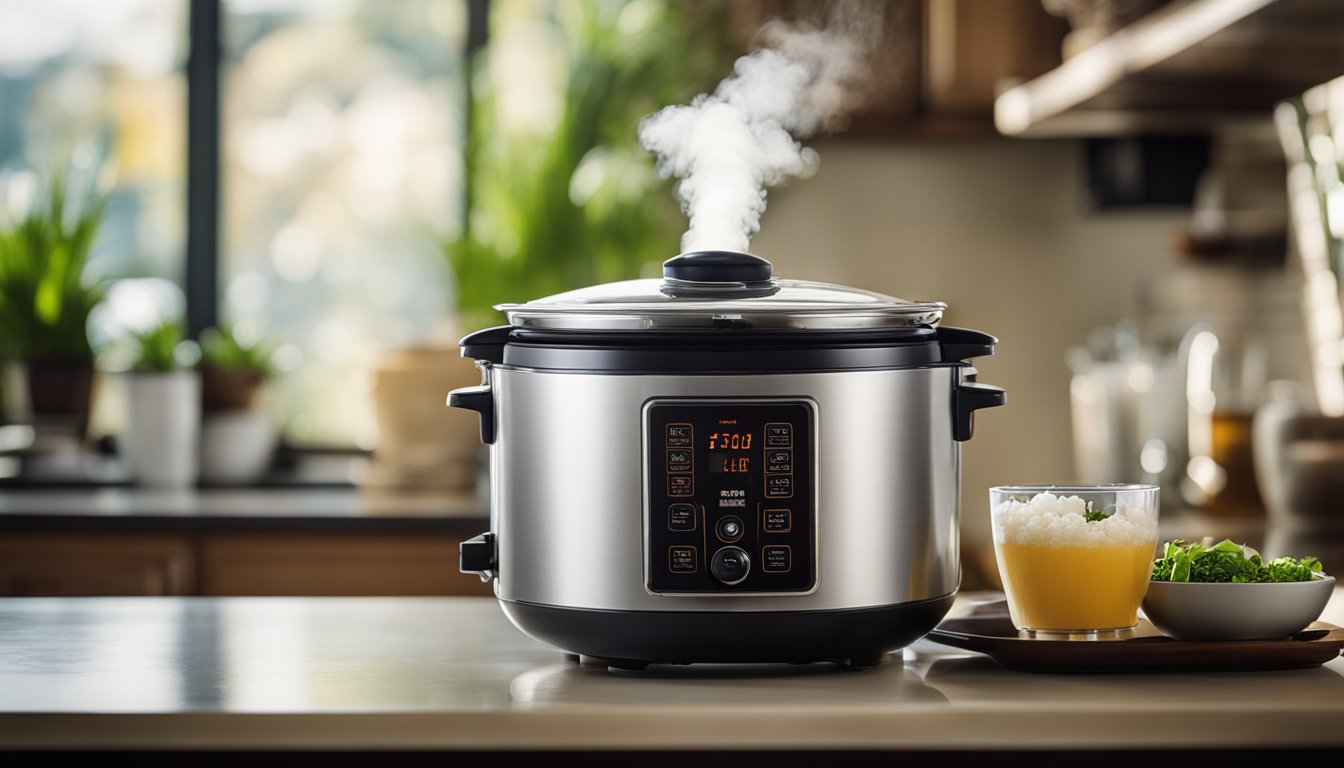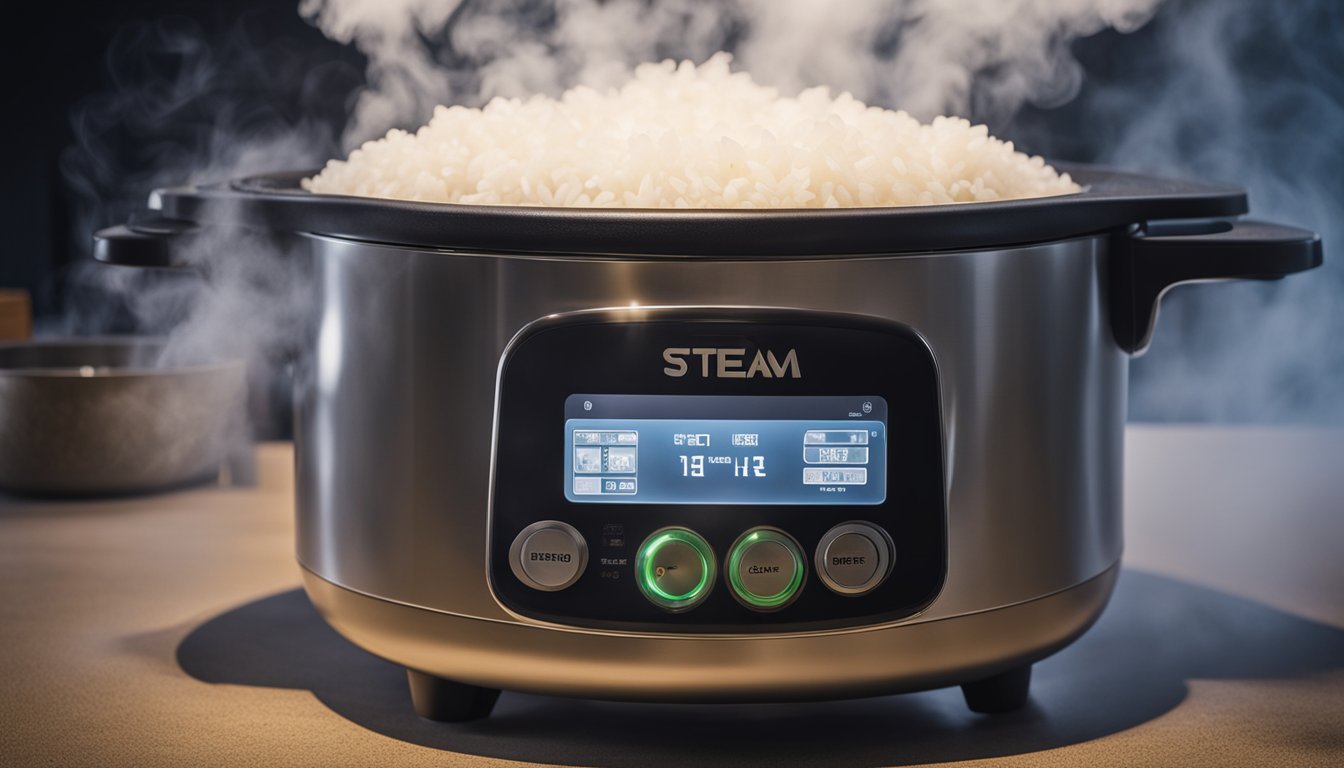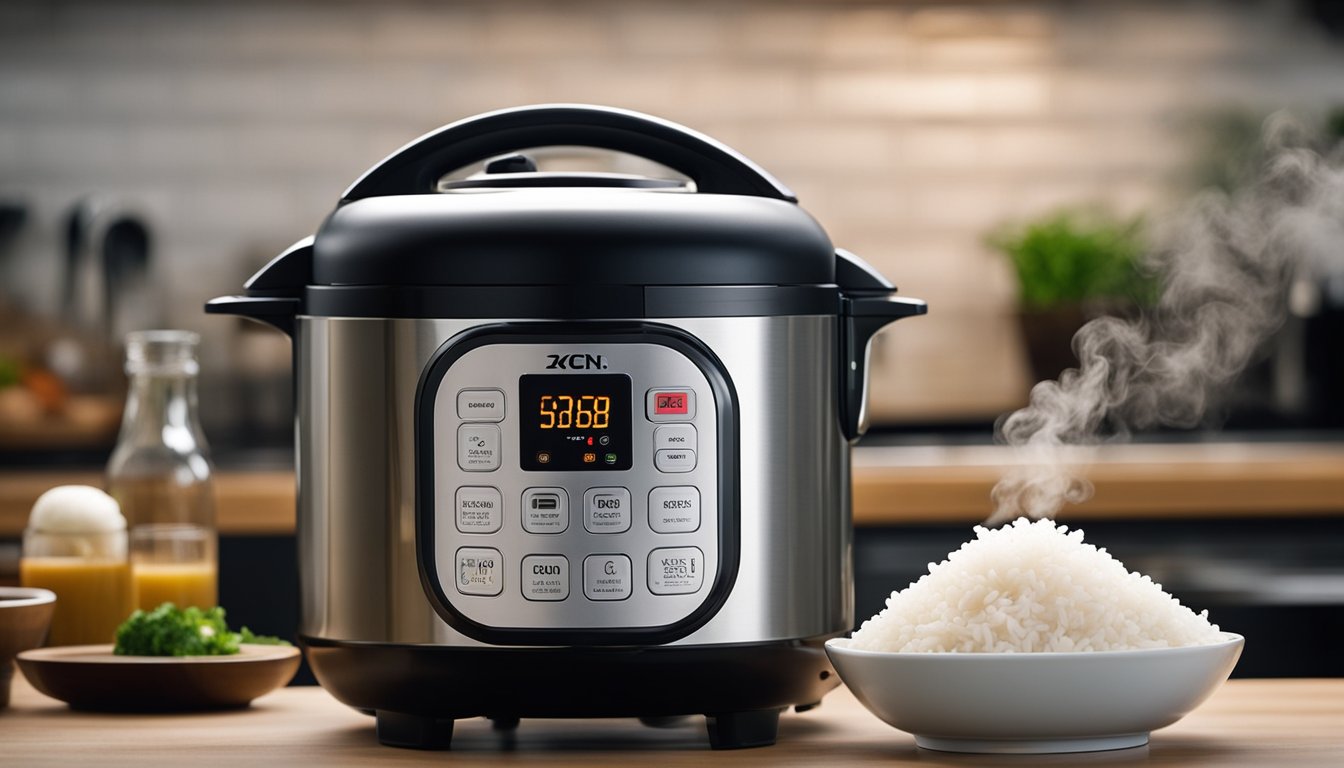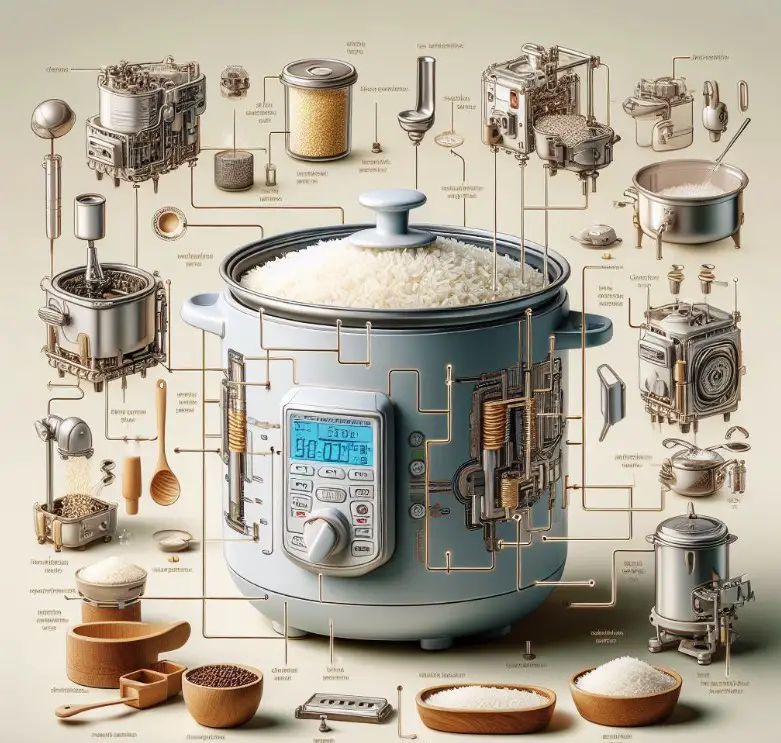Rice cookers are a staple in many households, especially those that consume rice regularly. These handy appliances are known for their ability to cook rice perfectly every time. However, some people wonder if steam comes out of rice cookers during the cooking process. The answer is yes, steam does come out of rice cookers when cooking rice.

Rice cookers work by heating up water and rice in a sealed pot, which creates steam. As the water boils and turns into steam, it rises and escapes through a vent in the lid of the rice cooker. This vent is designed to release steam and prevent pressure from building up inside the rice cooker. The steam that comes out of the rice cooker during the cooking process is perfectly normal and is an indication that the rice is cooking properly.
Key Takeaways
- Rice cookers produce steam during the cooking process.
- The steam escapes through a vent in the lid of the rice cooker.
- The steam that comes out of the rice cooker during the cooking process is perfectly normal.
Understanding Rice Cookers
Components and Functionality
A rice cooker is a kitchen appliance designed for cooking rice. It consists of a cooking pot, a steamer basket, and a lid. The cooking pot is usually made of non-stick material and has a heating element at the bottom. The steamer basket is placed on top of the cooking pot and is used for steaming vegetables or other foods. The lid is designed to fit securely on top of the cooking pot to prevent steam from escaping.
Rice cookers come with different features and functionalities depending on the brand and model. Some rice cookers have preset steam settings that allow for easy cooking of rice and other foods. Others have a multi-use cooker function that enables users to cook different types of food in one appliance. Instruction manuals are usually included with the rice cooker to provide guidance on how to use the appliance.
Types of Rice Cookers
There are two main types of rice cookers: conventional and digital. Conventional rice cookers have a simple on/off switch and a single cooking setting. Digital rice cookers, on the other hand, have a digital display and multiple cooking settings, including a preset steam setting.
When using a rice cooker, it is important to follow the instructions provided in the instruction manual. This will ensure that the rice is cooked properly and that the appliance is used safely. Some rice cookers have a pot that is removable and dishwasher safe, making cleaning up after cooking easy and convenient.
In summary, rice cookers are a useful kitchen appliance for cooking rice and steaming other foods. They come in different types and with different features, making it easy to find one that fits your needs. By following the instructions provided, users can ensure that their rice cooker is used safely and that their food is cooked properly.
The Rice Cooking Process

Cooking rice can sometimes be a tricky task, but with a rice cooker, it can be made much simpler. A rice cooker uses the steaming process to cook rice, which results in a fluffy and perfectly cooked batch of rice.
Preparation and Water Ratio
Before cooking, the correct amount of water must be added to the rice cooker. The water ratio is usually 1:1.5 or 1:2, depending on the type of rice being used. It is important to measure the water accurately to avoid overcooking or undercooking the rice.
Cooking Time and Temperature
Once the water and rice are added to the rice cooker, the cooking process can begin. The timer is set according to the type of rice being used. The cooking temperature is usually around 212°F (100°C), which is the boiling point of water. The rice cooker will automatically switch off once the rice is cooked.
Using the Steam Basket
Some rice cookers come with a steam basket, which can be used to steam vegetables or other foods while the rice is cooking. To use the steam basket, simply place the food inside and cover it with foil. The steam from the rice will cook the food, giving it a natural flavor and aroma.
Overall, the rice cooking process in a rice cooker is simple and efficient. By using the correct amount of water and following the instructions for cooking time and temperature, the result will be fluffy, perfectly cooked rice with minimal excess starch.
Steaming Foods Beyond Rice
Rice cookers are versatile appliances that can do more than just cook rice. They can also be used to steam a variety of foods, from vegetables and proteins to alternative grains and dishes. In this section, we will explore some of the different foods that can be steamed in a rice cooker and how to do it.
Vegetables and Proteins
Steaming vegetables in a rice cooker is a quick and easy way to cook them without losing their flavor or nutrients. Simply add water to the rice cooker, place the vegetables in the steaming basket, and set the timer. Some vegetables that steam well in a rice cooker include broccoli, carrots, and green beans.
In addition to vegetables, proteins such as chicken, fish, beef, and pork can also be steamed in a rice cooker. This method of cooking helps to retain the natural flavors of the meat while keeping it moist and tender. To add extra flavor, try seasoning the meat with spices or seasonings before steaming.
Alternative Grains and Dishes
Rice cookers can also be used to steam alternative grains such as quinoa and oatmeal. To do this, simply add the grains and water to the rice cooker and set the timer. This method of cooking is convenient and helps to preserve the texture and flavor of the grains.
In addition to grains, rice cookers can also be used to steam seafood, pasta, and even eggs. To steam seafood, simply place it in the steaming basket with some water and set the timer. For pasta, add water and pasta to the rice cooker and set the timer. And for eggs, place them in the steaming basket and set the timer.
Overall, a rice cooker can be a useful tool in any kitchen for steaming a variety of foods. With a little experimentation and creativity, you can discover new and delicious ways to use your rice cooker beyond just cooking rice.
Enhancing Flavor and Nutrition

Rice cookers are a great way to cook rice, but did you know that they can also be used to enhance the flavor and nutrition of your food? Steaming is a healthy cooking method that helps retain nutrients, natural flavor, and aroma of food items.
Advantages of Steaming
Steaming is a great way to cook food items without losing their nutrients. It is a gentle cooking method that helps retain the natural flavor, color, and texture of food. Steaming also helps to preserve the water-soluble vitamins and minerals that are often lost during other cooking methods such as boiling or frying.
Moreover, steaming is a great way to cook food items without adding any extra fat or calories. It is an ideal cooking method for those who are looking to maintain a healthy diet. Adding steamed vegetables to your meals is a great way to increase your daily intake of nutrients and fiber.
Adding Spices and Seasonings
One of the great things about steaming is that you can add spices and seasonings to your food items to enhance their flavor. Adding spices and seasonings to your food items can also increase their nutritional value. For example, adding turmeric to your steamed vegetables can increase their antioxidant properties.
You can also add broth or stock to your rice cooker to infuse your food items with extra flavor. Adding a small amount of broth or stock to your rice cooker can help to keep your food items moist and juicy.
In conclusion, steaming in a rice cooker is a great way to enhance the flavor and nutrition of your food items. It is a healthy cooking method that helps retain nutrients, natural flavor, and aroma of food items. Adding spices and seasonings to your food items can increase their nutritional value and make them more delicious.
Maintenance and Safety
Cleaning Your Rice Cooker
Keeping your rice cooker clean is essential to ensure its longevity and safe operation. After each use, unplug the unit and allow it to cool down before cleaning. Use a damp cloth or sponge to wipe the exterior and interior of the cooker. Avoid using abrasive materials or harsh chemicals that may damage the surface or affect the taste of the rice.
The inner pot of the rice cooker can be removed and washed separately. Do not use steel wool or other abrasive materials to clean the pot, as it may scratch the surface. Instead, use a soft sponge or cloth with a mild detergent to clean the pot thoroughly. Rinse the pot with clean water and dry it before placing it back into the cooker.
Safe Cooking Practices
When using a rice cooker, it is important to follow safe cooking practices to prevent accidents and ensure the quality of the cooked rice. Always make sure the steam vent is open during the cooking cycle to prevent overflow and ensure even cooking. Some rice cookers have a steam vent cap that helps catch any foamy substances that come out with the steam [1].
It is also important to cook food at safe temperatures to prevent foodborne illnesses. Use a meat thermometer to check the internal temperature of meats and poultry to ensure they are cooked to the appropriate temperature [2].
In summary, proper cleaning and safe cooking practices are essential for the safe operation of a rice cooker. Always follow the manufacturer’s instructions and guidelines to ensure the longevity and safe operation of your rice cooker.






















